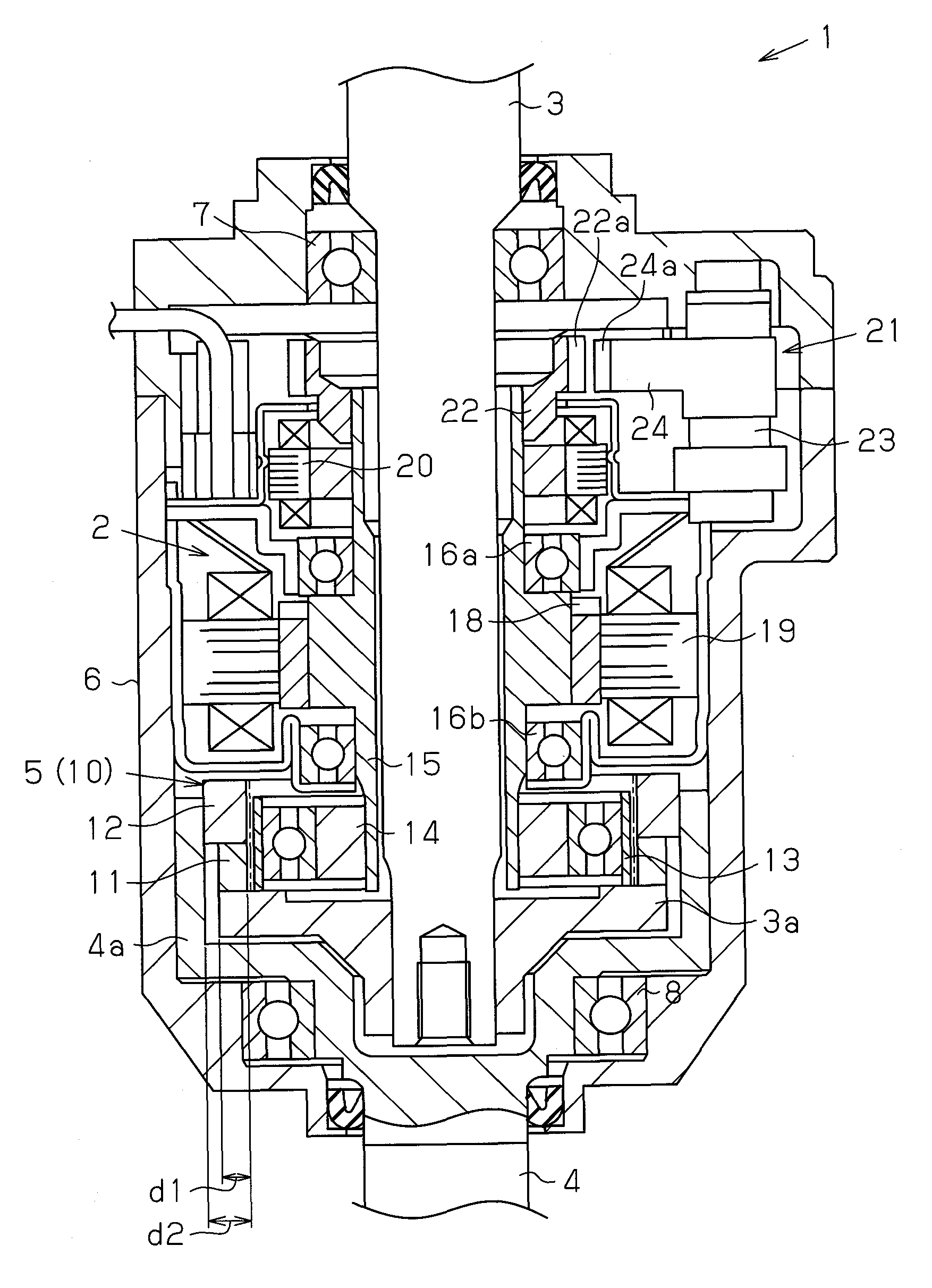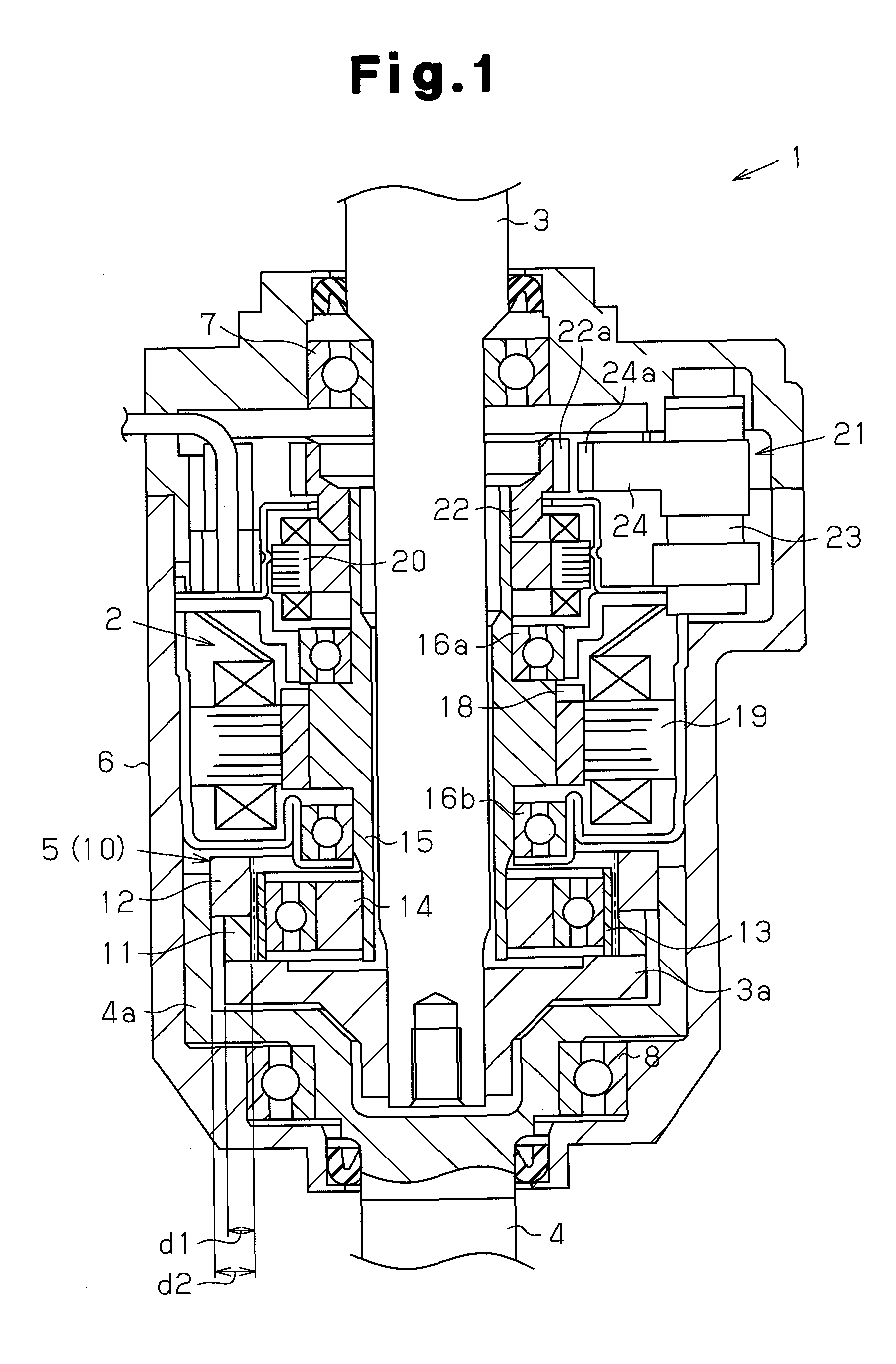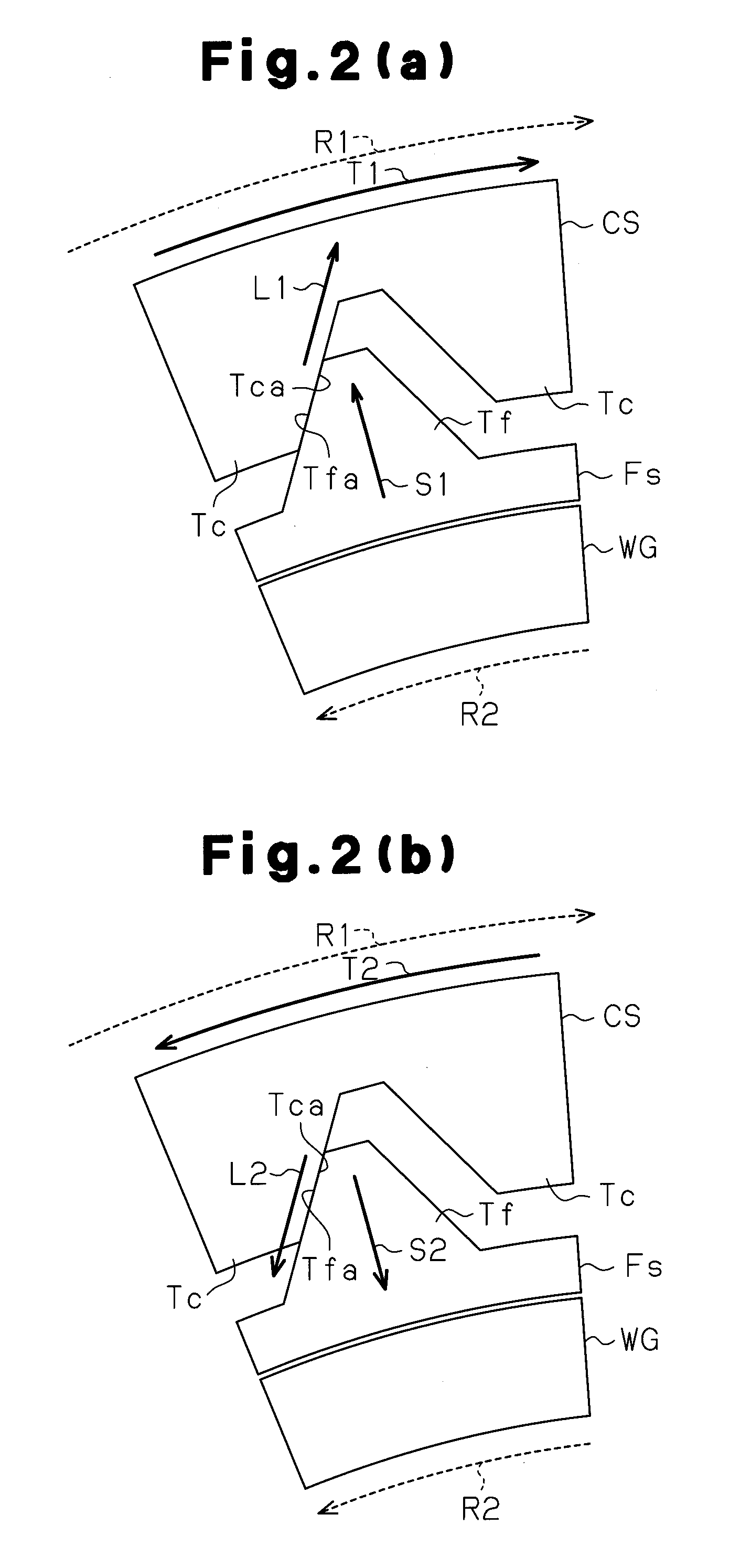Transmission ratio variable device and steering gear
- Summary
- Abstract
- Description
- Claims
- Application Information
AI Technical Summary
Benefits of technology
Problems solved by technology
Method used
Image
Examples
first embodiment
[0021]A variable transmission ratio apparatus of a housing-fixed type according to a first embodiment of the present invention will now be described with reference to the drawings.
[0022]As shown in FIG. 1, a variable transmission ratio apparatus 1 includes a motor 2, a differential gear mechanism 5, and a housing 6. The motor 2 serves as a power source. The differential gear mechanism 5 adds rotation resulting from motor drive to rotation from an input shaft 3 resulting from a steering operation and transmits the resulting rotation from the input shaft 3 to an output shaft 4. The housing 6 accommodates the motor 2 and the differential gear mechanism 5.
[0023]In detail, the housing 6 of the present embodiment is cylindrical. The input shaft 3 and the output shaft 4 have end portions that are arranged in the housing 6 and supported in a rotatable manner relative to the housing 6 by bearings 7 and 8 arranged in the vicinity of two open ends of the housing 6. More specifically, the input...
second embodiment
[0042]A second embodiment of the present invention will now be described in detail with reference to the drawings.
[0043]As shown in FIG. 3, a vehicle steering apparatus of the present embodiment includes a transmission shaft 60 forming part of a steering shaft 53 to which a steering wheel 52 is fixed. The transmission shaft 60 is connected to a rack shaft 55 by a rack and pinion mechanism 54. Rotation of the steering shaft 53 resulting from a steering operation is converted to a reciprocal linear movement of the rack shaft 55 by the rack and pinion mechanism 54.
[0044]Pinion teeth 60a formed on a lower end of the transmission shaft 60 are mated with rack teeth 55a formed on the rack shaft 55. The reciprocal linear movement of the rack shaft 55 caused by rotation of the steering shaft 53 is transmitted to knuckles (not shown) by tie-rods connected to the two ends of the rack shaft 55. This changes the steering angle of steered wheels of a vehicle, that is, the driving direction of the...
PUM
 Login to View More
Login to View More Abstract
Description
Claims
Application Information
 Login to View More
Login to View More - R&D
- Intellectual Property
- Life Sciences
- Materials
- Tech Scout
- Unparalleled Data Quality
- Higher Quality Content
- 60% Fewer Hallucinations
Browse by: Latest US Patents, China's latest patents, Technical Efficacy Thesaurus, Application Domain, Technology Topic, Popular Technical Reports.
© 2025 PatSnap. All rights reserved.Legal|Privacy policy|Modern Slavery Act Transparency Statement|Sitemap|About US| Contact US: help@patsnap.com



